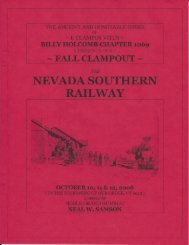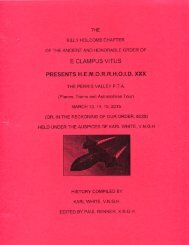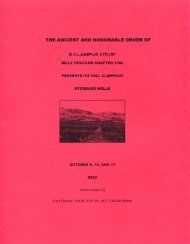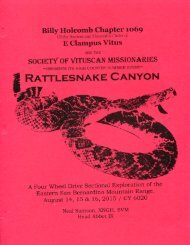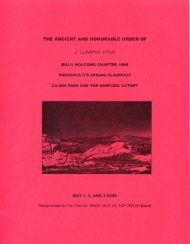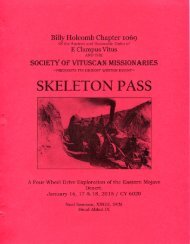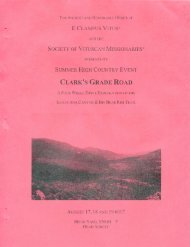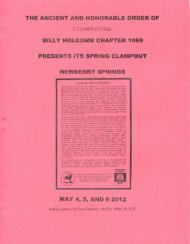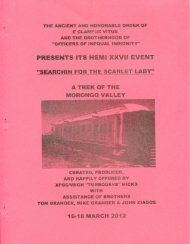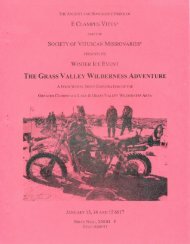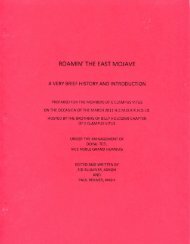6023 Spring Doins ANZA EXPEDITIONS History
Create successful ePaper yourself
Turn your PDF publications into a flip-book with our unique Google optimized e-Paper software.
Appendix<br />
Beginning in 1759, the Jesuit Order fell out of favor in Portugal, France, Spain,<br />
and other parts of Europe. In 1767 the Spanish Empire joined this movement, part of a<br />
general trend called the Bourbon Reforms, which in part aimed to tighten the Crown’s<br />
control over American-born Spaniards. To that end, in 1767 King Carlos III named<br />
Gaspar de Portola as governor of California, and gave him authority to oust the Jesuits<br />
and confiscate their property. They were to be replaced by the Franciscan Order, which<br />
would take over existing missions in Mexico and found new ones in Alta California.<br />
Eventually they would establish a chain of 21 such missions along El Camino Real. By<br />
the time of the Anza expeditions, five missions had been established, and their<br />
presence was an important factor in Anza’s success. In chronological order, they were:<br />
Name Location Date<br />
San Diego Alcala San Diego 1769<br />
San Carlos Borromeo de Carmelo Carmel 1770<br />
San Antonio de Padua Near King City 1771<br />
San Gabriel San Gabriel 1771<br />
San Luis Obispo de Tolosa San Luis Obispo 1772<br />
BIBLIOGRAPHY<br />
Guerrero, Vladimir, The Anza Trail and the Settling of California. Heyday Books,<br />
Berkeley, 2006.<br />
Pourade, Richard F., Anza Conquers the Desert. Copley Press, San Diego,<br />
1971.<br />
Robinson, John W. and Bruce D. Risher, The San Jacintos. Big Santa Anita<br />
Historical Society, Arcadia, CA, 1993.<br />
Various Wikipedia sources.<br />
Maps are from The Anza Trail.<br />
21




